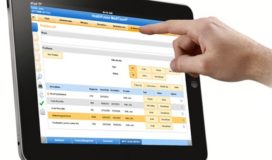Telehealth
Telecare is the concept of providing health assistance through communication and information technology (IT). Telehealth is one of the measures of telecare and defined as the mechanism of all possible ways encompassing medical services, health-related education to the public using Information Technology. It comprehends a number of strategies to distribute medical services in all spheres i.e. education, diagnosis, and medical treatment. It not just covers only peculiar but all the aspects of the medical field.
Through Telehealth, it is possible to treat the patient anywhere and anytime. Telehealth is the perfect concept of dealing with the health informatics and other related fields i.e. preventive healthcare, disaster management etc. It is a much wider concept than telemedicine as it encompasses many health issues which are not addressed by telemedicine.
Telehealth Comprises of Different Fields of Programs Which are as Follows-
- Video-Conferencing – This domain of application deals with the real-time information. Both the physician and patient communicate to discuss the health issues which the patient possesses. Nowadays many updated healthcare providers make use of audiovisual telecommunication technology to provide both consultative and diagnostic and medical treatment services.
- Mobile-Health – This field is required to deliver the health-related information to the public on large scale using various devices such as mobile phones, computers.
- Remote Patient Monitoring – It helps in achieving the goal of delivering health care services to the patients suffering from chronic ailments.
Telehealth even aware individuals about their health issues in advance and also provides them regular checking notifications. Telehealth equipment assists in developing various service packages that are focused on individual health requirements. The advantages of Telehealth are even acknowledged by the Whole System Demonstrator program. Some of the findings include:-
- Visits to hospitals was decreased by 15%
- Emergency Admission was reduced by 20%
- Mortality rates were decreased by 20%
The above results clearly state that the Telehealth has been able to promote healthcare services to some extent and also accessible to the large population. Telehealth technology seems simple but it is as complex as our imagination.
Though Telehealth provides many benefits but it needs a large investment in set-up which makes it impractical for some clinicians. But as technology is improving day-by-day, it has been possible to afford this and physicians are eager to invest in it as returns are higher than traditional clinical methods. It takes care of the chronic health issues which are beyond the treatment of regional health providers. Therefore, it is perfect for those patients for whom traveling is not possible. It also ensures that the patients get the best treatment facilities in quick time possible.
Telehealth has been designed to treat those patients especially living in remote areas where it is not feasible to establish hospitals. Though the distance is not the major issue nowadays but still there are some remote areas where better health facilities are not available. To overcome such issues, many government organizations and NGO’s are working together in order to offer better healthcare services which have been made possible with the help of Telehealth.
Health IT




